
But in every air force there were less-glamorous aeroplanes that 'did their duty' in the background. One such unassuming workhorse was the Airspeed AS.10 Oxford, whose quiet work helping airmen to earn their spurs ultimately helped achieve victory for the Allies.
In the second half of the 1930s, the Air Ministry created Operational Requirement 42, which eventually resulted in Specification T.23/36 to Airspeed for multi-engine training aircraft. Only founded in 1931, the company had not yet supplied any aircraft to the RAF. However, it had a trump card in its hand – a development of its successful AS.6 Envoy. This eight-seat passenger aircraft had been developed as a heavier, twin-engined version of Airspeed's Courier, a single radial-engined light transport aircraft. As the two shared much of their design, development was relatively straightforward. Confidence in the project had been high enough to display the machine to the public at Farnborough only a week after its first flight. Production had started even before this though, with Airspeed initially working closely with British engine manufacturer Wolseley Motors, who were both a key supplier and early customer for the Envoy.
The Air Ministry's decision to approach Airspeed, a relatively young manufacturer, was undoubtedly influenced by the existence of the Envoy, and by the fact that Airspeed had the widest experience with retractable landing gear of any manufacturer in the UK at the time (the Courier was the first British production aircraft to have such undercarriage).
Denne historien er fra September 2022-utgaven av Scale Aircraft Modelling.
Start din 7-dagers gratis prøveperiode på Magzter GOLD for å få tilgang til tusenvis av utvalgte premiumhistorier og 9000+ magasiner og aviser.
Allerede abonnent ? Logg på
Denne historien er fra September 2022-utgaven av Scale Aircraft Modelling.
Start din 7-dagers gratis prøveperiode på Magzter GOLD for å få tilgang til tusenvis av utvalgte premiumhistorier og 9000+ magasiner og aviser.
Allerede abonnent? Logg på
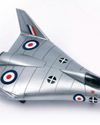
Mustard
BAC's Low Speed Research Vehicle

KOVOZAVODY PROSTEJOV (KP) 1 Was Monty's Triple'
Brian Derbyshire

SPECIAL HOBBY SAAB J-21A Review
From the late 1930s and early 1940s, with thewar in Europe raging around them andedging ever closer to its borders, the Flygvapnet had ordered Seversky P-35A aircraft, alongside Vultee Vanguards, but only sixty of the former and none of the latter were received.
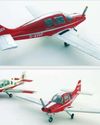
VFR MODELS Beagle B.121 Pup
This is the first 3D printed kit I have come across and it is really rather fine.

Hearts in the sky RIAT RETURNS
After a nearly three-year hiatus RIAT returned to our skies with a hot show in every sense of the word. SAM’s Mike Verier and Ray Ball were there.

Colour Conundrum
A Cancellation Conundrum - The RAF F-111s That Might Have Been Part 1

COPPER CAUDRON Caudron G.Ill in 1/32
Copper State Models have carved a name for themselves in the last few years producing high quality plastic kits of World War One subjects.
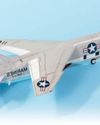
Academy RF-8A Crusader Conversion in 1/72
USMC squadron VMCJ-2 used six RF-8As during the Crisis (designation F8U-1P until September 1962), with others held in reserve, two flying out of Guantanamo Bay, and four out of NAS Key West.
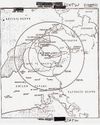
The Cuban Missile Crisis
Modelling US reconnaissance assets in 1/72 Part 2: The Nuclear Confrontation
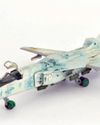
UKRAINIAT striker
The Sukhoi Su-24 is an all-weather attack aircraft capable of supersonic speeds and characterised by its side-by-side pilot/navigator seating and its variable geometry wing.